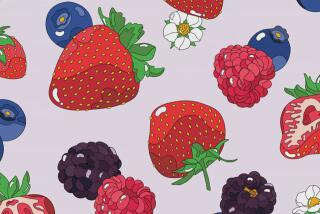Alpine Strawberries Provide a Gourmet Treat
It’s strawberry season. Time to plant and eat those bright red berries that make you think of summer. While you’re planting, why not try growing alpine strawberries? Considered a gourmet delicacy, these small, tasty berries are easy to grow and bear fruit most of the year.
“Alpines [Fragaria alpina] are a great snacking berry,” says Sharon Kaszan, trials manager for W. Atlee Burpee & Co. in Warminster, Pa., a mail-order company that carries alpine strawberry plants, which are sometimes difficult to find in the nursery.
“Alpine strawberries might be small, but there’s something about them that makes you keep coming back for more,” Kaszan says. “They are slightly tart berries that some people have described as being a cross between raspberries and strawberries.”
Several kinds of alpine strawberries include red and yellow varieties. The most readily available are red berries, including ‘Baron von Solemacher,’ which probably grows the best from seed. Another common variety is ‘Ruegen Improved,’ a type often found in European gardens, where alpines are a popular crop.
Alpine plants form compact mounds of lush, green foliage, with starry white flowers on pert stems. They do well along borders and in containers.
April is the perfect time to plant alpines from plants or seed. Here are some tips:
* Plant alpines in a part-shade location. Morning sun and afternoon shade is preferable.
* If the soil is high in clay, amend with homemade or bagged compost by 25% to 50%.
* Place alpine plants at the same level as you find them in their container. It is important not to plant the crown (the center mound where new growth orginates) too deep, or the plant will rot. Place the crown too high, and the plant will dry out.
* When planting in a container, use a high-quality potting soil that is high in perlite or pumice.
* Alpines don’t need much room to grow. Plant in-ground and container plants 3 to 4 inches apart for a thick, lush look.
* Growing from seed can be challenging but is possible:
First, refrigerate seed for five to seven days. Then sprinkle seeds on top of a seed-starting mixture and mist well. Put in a warm spot, such as a sunny window, until the plants come up, which can take two weeks to a month. Keep moist while germinating, but not overly wet.
Once the plants are up, move them to a cooler location to prevent the growth of soil bacteria, which will quickly kill young plants. In the future, alpines will reseed themselves if they like their growing location.
* Water alpines when the soil is approaching dryness. Don’t keep overly wet or too dry.
* Alpines are heavy feeders and require a fertilizer high in phosphorus for good berry production. Use a 10-30-10 fertilizer or bone meal, according to package directions. Feed container plants every two weeks and in-ground plants monthly. Fertilize seed-grown alpines when they have three true leaves using a combination of fish emulsion and seaweed or kelp extract.
* Alpines don’t produce well in hot weather. Berries growing during heat spells may become misshapen, because the pollen becomes too hot and isn’t as viable. Pinch malformed berries out to make way for more appetizing ones.
Alpine strawberries will be available at Mother’s Market health-food chain (stores include Huntington Beach, Costa Mesa and Irvine) in the next few weeks and at the Green Scene Garden Show on April 24-25 at the Fullerton Arboretum, (714) 278-3404.
Plants are available now through W. Atlee Burpee & Co., (800) 888-1447.
Seeds can be purchased through Bountiful Gardens, (707) 459-6410.
More to Read
Sign up for The Wild
We’ll help you find the best places to hike, bike and run, as well as the perfect silent spots for meditation and yoga.
You may occasionally receive promotional content from the Los Angeles Times.






